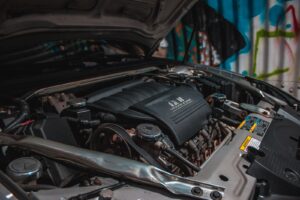Changing a radiator is one the proudest achievement a DIYer can achieve. On top of that, you can easily save yourself a few hundreds of dollars. In this article, we will discuss the basic of a radiator, tools you may need, and what to do after replacing a radiator so the vehicle will not overheat. Let’s begin. Start by getting yourself a few basic tools. You will need a good set of metric and standard socket set and wrench. The tool set should also come with multiple ratchets in the size of ¼”, 3/8” and ½”. In addition, you will also need a channel lock plier, hose puller, oil pan and a funnel. In this example, we will use a common vehicle (Honda civic) as a basic vehicle for replacing a radiator.
 First, start by disconnecting the battery for safety reason. Next drain the coolant by removing the drain plug. Moreover, locate the cooling fans and remove the cooling fan which is normally held on by a few 10mm bolts. On some vehicles, the cooling fan may be held on by clips which need to be removed. Next, remove the upper and lower radiator hoses. You can use a channel lock plier to remove the hoses or a hose puller which will make it easier to remove. On some vehicle the radiator will have the upper brackets holding the radiator in place; remove the brackets. There may be a transmission line you will need to remove depending on the make and model. Remove the transmission line if needed. You may need a flare wrench to remove the transmission line.
First, start by disconnecting the battery for safety reason. Next drain the coolant by removing the drain plug. Moreover, locate the cooling fans and remove the cooling fan which is normally held on by a few 10mm bolts. On some vehicles, the cooling fan may be held on by clips which need to be removed. Next, remove the upper and lower radiator hoses. You can use a channel lock plier to remove the hoses or a hose puller which will make it easier to remove. On some vehicle the radiator will have the upper brackets holding the radiator in place; remove the brackets. There may be a transmission line you will need to remove depending on the make and model. Remove the transmission line if needed. You may need a flare wrench to remove the transmission line.
After the line has been removed, it is time to remove the radiator. Remove the radiator and compare it to the new radiator. At this point; replace old parts as needed such as upper and lower radiator hoses and radiator cap. Install everything in reverse order such as the radiator and cooling fan. Make sure all the hoses and transmission line are tight. Replace any fluid that was lost during the removal such as antifreeze and transmission fluid. Connect the battery and start the engine with the radiator cap off. Allow the vehicle to idle for 20 minutes and at the same time topping off the radiator with coolant. During this process the cooling system will self bleed for air and pocket of air that may be in the system; Once 20 minutes has surpassed, replace the radiator cap and the vehicle is ready for a test drive.
